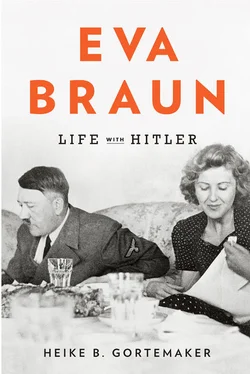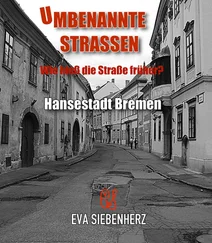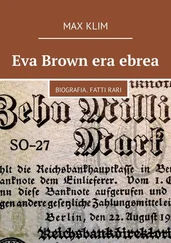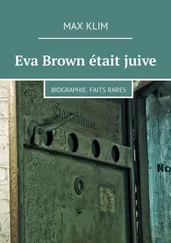Hitler and Goebbels thus staged, both in Party circles and before the public, a myth of solitude and isolation intended to make the Nazi leader personally unassailable and make his self-presentation as the “savior” of the German People, standing above everyone, more plausible. It was a necessary move. In late 1931, the NSDAP was on the rise. From a radical group limited to Bavaria it had become, within ten years, a political power to be taken seriously, playing an ever-greater role on the national stage since its sensational victory in the Reichstag election of September 14, 1930. The NSDAP was the second-strongest party in the Reichstag, after the Social Democratic Party (Sozialdemokratische Partei Deutschlands, or SPD), and together with the German National People’s Party (DNVP) under Alfred Hugenberg, parts of the German People’s Party (DVP), and the “Steel Helmet” league of World War I veterans they formed a so-called National Front against the Weimar state. At the same time, Hitler and his political adviser Hermann Göring were received for a discussion with Reich President Paul von Hindenburg for the first time on October 10. 20Hitler, not even a German citizen at the time, had arrived—to great public effect—at the summit of political power. 21
Hindenburg, the eighty-four-year-old former General Field Marshal and a celebrated war hero, had for more than a year left a so-called Presidential Cabinet in charge of state business—without the approval of Parliament, which, since the beginning of the Great Depression in 1929 and the collapse of the German economy, was wracked with all sorts of divisions. The Weimar constitution granted Hindenburg dictatorial powers “to restore public safety and order,” and with these powers he was unable to solve the country’s problems but he was able to prevent the state from total collapse for the time being. 22As democracy tottered and the ranks of the unemployed swelled from 4,840,000 in November 1931 to 6,127,000 in February 1932, the NSDAP mobilized voters from every class of society. It won the Hessian Landtag election of November 15, 1931, and put forward its leader as a candidate for Reich President against Hindenburg in early 1932.
Although Hindenburg decisively defeated Hitler in the second round of voting on April 10, 1932, 53 percent to 36.8 percent, the “chess match for power” had begun, as Goebbels strikingly put it at the beginning of the year. 23The Landtag elections in Prussia, Bayern, Württemberg, and Anhalt, as well as the city parliament election in Hamburg, were coming up. In addition, the political right forced Chancellor Heinrich Brüning, chosen by Hindenburg two years earlier, to step down, on May 30, 1932, and this cleared the path to dissolve the national parliament and hold new elections on July 31. 24In the interim, Hitler traveled tirelessly throughout the country, giving speeches, with an entourage consisting of Julius Schaub, Julius Schreck, Wilhelm Brückner, Hermann Esser, Sepp Dietrich, Max Amann, Otto Dietrich, and of course Heinrich Hoffmann, in various combinations. He crisscrossed Germany in spectacular fashion on his “Germany flights” in a rented airplane, as he had done before in the election campaign for President—a true marathon journey from one city to the next that only strengthened his image as Germany’s omnipotent “Führer” and “savior.” 25
During this period, the NSDAP and above all its head of propaganda, Goebbels, organized the rallies and marches that accompanied Hitler, under the slogan “Direct to the People.” The Party had propaganda films made and produced records with its leader’s “Appeal to the Nation.” 26The Propaganda head office had moved from Munich offices on Hedemannstrasse to Berlin by then, near the Anhalter train station in what is today the Friedrichshain-Kreuzberg neighborhood. There Goebbels spoke to an NSDAP rally in the Lustgarden on July 9, 1932, the same day Hitler celebrated a so-called Day of Greater Germany in Berchtesgaden. 27Hoffmann’s studio, too, was operating at full speed. Every election event was accompanied by photographers, and the resulting images were used and disseminated in Party publications. The first of what would be many large-format photo-illustrated books published by Hoffmann appeared in 1932, photographically dramatizing the “cult of the Führer” by casting Hitler as the “savior” and glorifying “his” movement. 28
Eva Braun, working in Hoffmann’s photo lab, could thus follow the course of the elections and the appearances of her secret lover by means of Hoffmann’s propaganda materials, produced in huge numbers and not yet winnowed down for publication. There was not much time for the relationship itself, of course. Even after the Reichstag elections, in which the NSDAP won 37.4 percent of the vote and became the strongest political force in Germany, with 230 seats in Parliament, Hitler allowed himself only a few days of rest and relaxation in Munich and Berchtesgaden. Accompanied by Goebbels, with whom he was in constant contact, Hitler traveled to the Tegernsee (a lake in the Bavarian Alps), went to the opera in Munich, and then withdrew to Haus Wachenfeld, the small summer house on the Obersalzberg that he had rented in 1928. The housekeeper there was his half-sister Angela Raubal, mother of the dead Geli. Hitler gathered around him the members of his innermost NSDAP leadership circle—Goebbels, Göring, Gregor Strasser, Wilhelm Frick—and they worked out what would be necessary if the NSDAP were to take power. 29It is unclear when and how he saw Eva Braun during that stay, or even if he saw her at all. However, Otto Wagener, who said himself that he accompanied Hitler “on the majority of his many trips,” said in his memoir that during the 1932 campaign Hoffmann often brought “his little lab girl Eva Braun” along, “whom Hitler liked to see at the table in the evening, for distraction.” 30
What is certain is that Hitler and his colleagues in the Nazi Party were anxious to take power as quickly as possible after their electoral successes, and they feverishly schemed about how best to do so. Hitler had not yet, after all, reached his goal of being named Chancellor. In secret negotiations on August 6, 1932, with Kurt von Schleicher, the influential but inscrutable Minister of Defense in Chancellor Franz von Papen’s conservative-national cabinet, Hitler demanded the office of Chancellor for himself and six additional key cabinet posts for his party, including ministers of the interior, economy, and finance, but to no avail. 31Hindenburg in particular was consistently opposed to the NSDAP leader’s demands. Talks between the two men at the elderly president’s offices at 73 Wilhelmstrasse—the former “Ministry of the Royal House”—on the afternoon of August 13, 1932, did nothing to change that. Hitler was offered the position of Vice-Chancellor and turned it down. 32
Martyrdom or Calculation?
During this politically decisive period, there was no time for Hitler to see his young Munich girlfriend regularly. In any case, the NSDAP leader was often in Berlin, where since February 1931 he regularly stayed in a suite at the legendary Hotel Kaiserhof at 4 Wilhelmplatz (formerly Ziethenplatz), across the street from the Reich Chancellery. The hotel was the first luxury hotel in the city, opened in 1875 and three years later one of the showpieces of the 1878 Congress of Berlin, which took place under the leadership of Chancellor Otto von Bismarck. Since the early 1920s, the hotel management had sympathized with the right-wing nationalist forces operating against the Weimar state, so it was no coincidence that the top floor of the hotel turned into the NSDAP’s provisional headquarters. 33
Despite his frequent absences, there is no evidence for the claim that Hitler wanted “an undemanding short-term relationship” with Eva Braun at first any more than there is for the opposite claim. 34It is documented in numerous sources, however, that the twenty-year-old woman tried to take her own life with her father’s gun at some point during the course of 1932. Witnesses from Hitler’s circle as well as members of the Braun family reported this fact after the war, although there are differing accounts of exactly what happened and when. Hoffmann wrote in his postwar recollections that Eva Braun did not show up at work one “summer morning” in 1932, and that he heard about her suicide attempt that afternoon from his brother-in-law, Dr. Wilhelm Plate. Eva Braun had called Plate in the middle of the night, according to Hoffmann, since she was getting “scared” after her gunshot wound. 35Hoffmann did not explain how she would have been in a position to make such a phone call, since her parents did not have a phone in their house at 93 Hohenzollernstrasse at that time; nor is it clear why, wounded and panicking, she would try to reach her boss’s brother-in-law, of all people. Is it not far more likely that she would turn to Hoffmann himself on that night, who would then in turn reach out to his brother-in-law, the doctor in the family, for advice? Another implausible element in Hoffmann’s version of events is the claim that he informed Hitler about the dramatic events only when Hitler happened to drop by the photo shop that afternoon. 36Hoffmann’s account is thus not reliable—what it shows is primarily Hoffmann’s own intent to conceal the extent of his role in the relationship between Eva Braun and Hitler.
Читать дальше












